 |
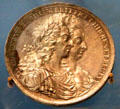 |
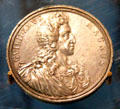 |
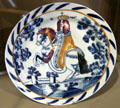 |
| William & Mary, King & Queen of England, Scotland, France & Ireland engraving (1690) by Robert White at National Portrait Gallery of Scotland. Edinburgh, Scotland. |
Silver William & Mary medal (1691) marks Pacification of Ireland at Battle of the Boyne museum. Ireland.  |
Silver William III medal (1691) marks Deventer Testimonial at Battle of the Boyne museum. Ireland.  |
King William ceramic plate at Battle of the Boyne museum. Ireland.  |
 |
 |
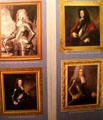 |
 |
Map of routes taken after landing in Ireland by forces of William III south from Carrickfergus & James II north from Kinsale at Battle of the Boyne museum. Ireland.  |
King William & Officers models at Battle of the Boyne museum. Ireland.  |
Portraits of Williamite & Jacobite opposing Generals & Officers at Battle of the Boyne museum. Ireland.  |
Battle of the Boyne (July 1, 1690) painting (1693) by Jan Wyck where armies of King William III fought those of King James II at National Gallery of Ireland. Dublin, Ireland.  |
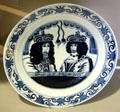 |
|
 |
 |
King William and Mary ceramic plate at Battle of the Boyne museum. Ireland.  |
|
Queen Anne, Princess of Denmark (daughter of James VII / II & Anne Hyde) (1665-1714) portrait (c1685) by Willem Wissing & Jan van der Vaart at National Portrait Gallery of Scotland, Edinburgh. |
Queen Anne (daughter of James VII / II & Anne Hyde) (1665-1714) engraving (c1702) by John Faber after John Closterman at National Portrait Gallery of Scotland, Edinburgh. |
- 1689 Jul 27: Battle of Killiecrankie, Scotland: Jacobite supporters of James II defeat a Protestant Covenanter army.
- 1689 Aug 21: Jacobites attempt a rising at Dunkeld, Scotland.
- 1689 Mar 12: James II &: troops land on southcoast of Ireland at Kinsale, moves north to reach Dublin within a month .
- 1690 Jun 14: King William III & his trained army lands in northern Ireland at Carrickfergus, moves south to set up favorable position at River Boyne, & waits for Jacobite forces.
- 1690 Jul 1: Battle of the Boyne, Ireland: King William III defeats Catholics led by James II.
- 1691 Jul 12: Battle of Aughrim, Ireland: Irish Jacobites defeated.
- 1691 Aug: King William III offers a pardon to all Jacobites in the Scottish Highlands who swear allegiance by year-end.
- 1692 Jan: King William III issues an order to discipline the Highland Scots.
- 1692 Feb 13: Glencoe Massacre: After MacDonald chief is late in taking oath to King William III, Campbell clan kills 38 members of MacDonald clan.
- 1694 Dec 28: Queen Mary dies. William III continues as King
- 1696 Feb: Jacobite plot to murder King William III discovered.
- 1696 March: Jacobite invasion scare.
- 1701 June: Parliament passes Act of Settlement which rules that if William III and Princess Anne (Mary's sister) die without heirs, throne passes to Sophia of Hanover, granddaughter of James I, & to her heirs, if they are Protestants.
- 1701 Sept 6: Death of deposed James II in France. Louis XIV of France recognises his son James Francis Edward Stuart as James III, later known as the 'Old Pretender'.
- 1702 Mar 8: Queen Anne, Protestant younger sister of Queen Mary, succeeds William III to throne of England.
- 1707 May: Act of Union unites kingdoms of England & Scotland.
- 1708 Mar 23: French naval squadron unsuccessfully attempts to land the Old Pretender on Firth of Forth near Edinburgh.
- 1714 Aug 1: Queen Anne dies without an heir, so George, Elector of Hanover is crowned King George I under terms of Act of Settlement 1701.
|








